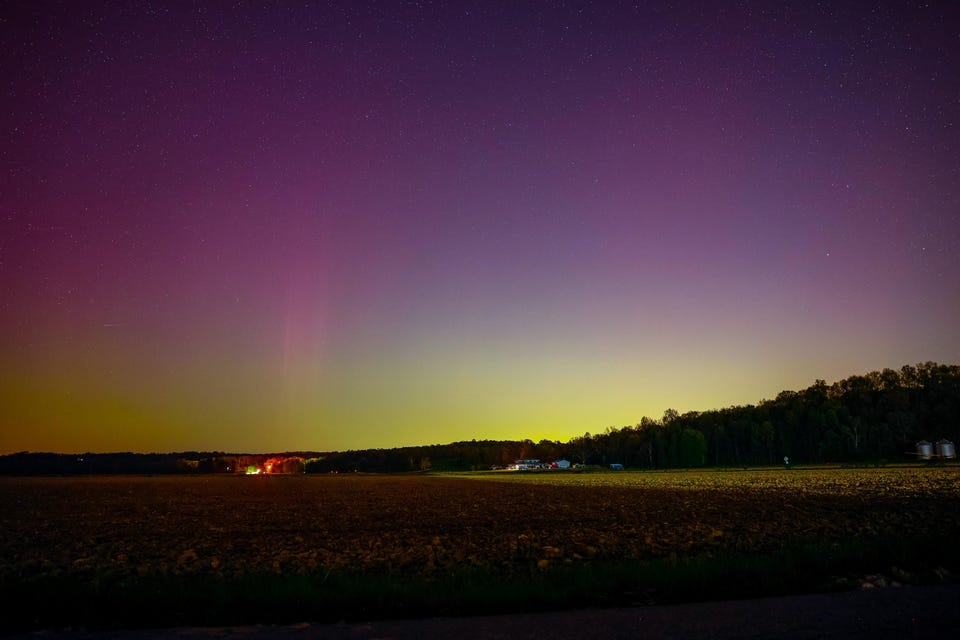In Photos: Northern Lights Seen As Far As US-Mexico Border As Massive Solar Storm Arrives


A severe geomagnetic storm on Sunday, April 23 saw aurora visible as far south as the border between the US and Mexico—and it’s expected to continue in some way tonight.
While states close to the US-Canada border and used to occasionally seeing glimpses of the Northern Lights, sightings were last night reported as far south as California, Texas, Arizona, New Mexico and Arkansas, according to Spaceweather.com. They were also seen across the UK and northern Europe.
The cause was a coronal mass ejection—a massive eruption of solar material from the Sun’s corona—whose effects arrived earlier than anticipated.
It’s thought that heightened activity will cause aurora farther south than usual once again tonight (April 24), though perhaps not as strong as the previous night.
Why is this happening? The Sun is more active than it has been for over a decade—and perhaps much longer. The solar cycle, also known as the sunspot cycle, is a roughly 11-year period during which our star waxes and wanes. It’s now on the cusp of a powerful “solar maximum” peak in 2024 or 2025. That means more common X-class solar flares and coronal mass ejections, which cause geomagnetic storms—which in turn means more frequent, more intense and more southerly displays of aurora.
Seeing the Northern Lights has never been this simple, but it still requires a lot of planning, some serious dedication and a good deal of luck.
If you want a glimpse then get yourself to a dark area with a good view of the northern horizon. Just south of a large city would be a bad choice because the urban glow will block out the aurora.
It’s also wise to lower your expectations. If you’re lucky you’ll see some definitie greyish clouds and columns of clouds that appear to move in a weird way. You may also see some structure. That’s what most aurora look like to the naked eye. Try “Night Mode” on your smartphone and you’ll see green on the screen. And use a tripod! Or, even better, a DSLR or mirrorless camera. Set to infinity/mountain focus, set it to record images in raw as well as JPG. Then engage manual mode and use your lens’ lowest f-number (say, f/4 or better still f/2.8), ISO 800 and a shutter speed of between five and 20 seconds.
Despite the rare show of Northern Lights far south of the Arctic Circle, displays remina much more common around 65º to 70º North latitudes. That means Alaska, northern Canada, Iceland, Lapland (northern Norway, Sweden, and Finland) and northern Russia are the best places to head to see purposefully seek out aurora.
However, nights are drastically shortening at northern latitudes. The peak season for aurora-viewing in the northern hemisphere is September through March. There is some evidence that geomagnetic activity increases around the equinoxes in late September and late March when the position of the Earth’s axis relative to the Sun puts it side-on to the solar wind.
Wishing you clear skies and wide eyes.
